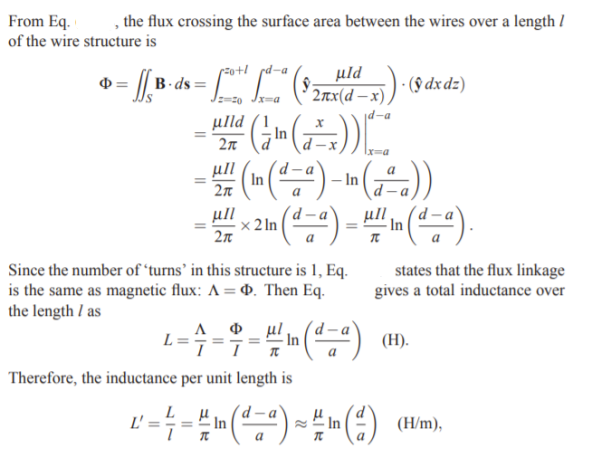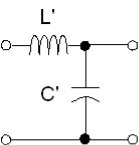|
I) Gradient
II) Divergence
III) Curl and its physical interpretation
Answer: I)Gradient: For a real-valued function f(x,y,z)f(x,y,z) on R3, the gradient ∇f(x,y,z)∇f(x,y,z) is a vector-valued function of R3, that is, its value at a point (x,y,z)(x,y,z) is the vector∇f(x,y,z)=(∂f/∂x,∂f/∂y,∂f/∂z)=∂f/∂x i+∂f/∂y j+∂f/∂zk ∇f(x,y,z)=(∂f/∂x,∂f/∂y,∂f/∂z)=∂f/∂x i+∂f/∂y j+∂/f∂z kIn R3, where each of the partial derivatives is evaluated at the point (x,y,z)(x,y,z). So in this way, you can think of the symbol ∇ as being “applied” to a real-valued function ff to produce a vector ∇f.It turns out that the divergence and curl can also be expressed in terms of the symbol ∇. This is done by thinking of ∇ as a vector in R3, namely ∇=∂/∂x i+∂/∂y j+∂/∂z k.II) Divergenceit is often convenient to write the divergence div f as ∇⋅f, since for a vector field f(x,y,z)=f1(x,y,z)i+f2(x,y,z)j+f3(x,y,z)kf(x,y,z)=f1(x,y,z)i+f2(x,y,z)j+f3(x,y,z)k, The dot product of f with ∇ (thought of as a vector) makes sense:∇⋅f=(∂/∂xi+∂/∂yj+∂/∂zk)⋅(f1(x,y,z)i+f2(x,y,z)j+f3(x,y,z)k)=(∂/∂x)(f1)+(∂/∂y)(f2)+(∂/∂z)(f3)=∂f1/∂x+∂f2/∂y+∂f3/∂z==div fIII) Curl and its physical interpretation: The curl of a vector field, denoted or
or  (the notation used in this work), is defined as the vector field having magnitude equal to the maximum "circulation" at each point and to be oriented perpendicularly to this plane of circulation for each point. More precisely, the magnitude of
(the notation used in this work), is defined as the vector field having magnitude equal to the maximum "circulation" at each point and to be oriented perpendicularly to this plane of circulation for each point. More precisely, the magnitude of  is the limiting value of circulation per unit area. Written explicitly,Physical Interpretation:The curl of a vector field measures the tendency for the vector field to swirl around. Imagine that the vector field represents the velocity vectors of water in a lake. If the vector field swirls around, then when we stick a paddle wheel into the water, it will tend to spin.Question: What is the various types of charge distributions?Answer:
is the limiting value of circulation per unit area. Written explicitly,Physical Interpretation:The curl of a vector field measures the tendency for the vector field to swirl around. Imagine that the vector field represents the velocity vectors of water in a lake. If the vector field swirls around, then when we stick a paddle wheel into the water, it will tend to spin.Question: What is the various types of charge distributions?Answer:Type of charge distribution | Denoted by | Unit |
Line Charge | λ (Line charge density) | C/m |
Surface Charge | σ (surface charge density) | C/m2 |
Volume Charge | ρ (volume charge density) | C/m3 |
Consider a point charge q called SOURCE CHARGE placed at a point ‘O’ in space. To find its intensity at a point ‘p’ at a distance ‘r’ from the point charge we place a test charge 'q'. | |||||
| |||||
| The force experienced by the test charge q’ will be: | ||||
| F = Eq’----(1) | ||||
| According to coulomb's law the electrostatic force between them is given by: | ||||
|
| ||||
| Putting the value of 'F' we get : www.citycollegiate.com | ||||
|
| ||||
|
| ||||
| This shows that the electric intensity due to a point charge is directly proportional to the magnitude of charge q and inversely proportional to the square of distance | ||||
|
“Electric Field Due to an Infinite Line Charge using Gauss’ Law,” where we found E=ρ^ρl2πϵsρ This is a consequence of Gauss’ Law ∮SD⋅ds=Qencl V=−∫CE⋅dl ) Wrapping up: C≜Q+/V=ρll(ρl/2πϵs)ln(D/d) Note that factors of ρlρl in the numerator and denominator cancel out, leaving: C=2πϵsl / (ln(b/a)) |
Laplace’s equation is a linear, homogeneous, partial differential equation. It has the form:∇2u=0or if u∈Rn then:∂2u/∂x12+……....+∂2u/∂xn2=0Poisson’s equation is simply the inhomogeneous version of Laplace’s equation. That means it is of the form:∂2u/∂x12+……....+∂2u/∂xn2=f(x1,...,xn)for u∈Rn f∈C(Rn)As a final note I am not sure about whether there is an strict, universal definition on the source function ff. I have gone with the one I have seen used most often but I am interested if anyone knows whether there are ever more relaxed requirements for f. Question: Find H at the centre of the square loop of side L in xy plane at the origin as centre, carrying current I.Answer: H=4[2μoI(sin45o+sin45o)/ 4πL] =2root(2) μoI/ πaQuestion: Calculate the internal and external inductance per unit length of a transmission line consisting of two long parallel conducting wires of radius a that carry current in opposite directions the axes of the wires are separated by a distance d, which is much larger than a.Answer:
|
 where the permeability has been generalized from free space to any substance with permeability µ, and it has been recognized that in the x-z plane, ˆφ = yˆ and r = x as long as x > 0.Given that the current in wire 2 is opposite that in wire 1, the magnetic field created by wire 2 at point P = (x,0,z) is in the same direction as that created by wire 1, and it is given by
where the permeability has been generalized from free space to any substance with permeability µ, and it has been recognized that in the x-z plane, ˆφ = yˆ and r = x as long as x > 0.Given that the current in wire 2 is opposite that in wire 1, the magnetic field created by wire 2 at point P = (x,0,z) is in the same direction as that created by wire 1, and it is given by
|
|
|
The intrinsic impedance is a property of a medium - an area of space. For a vacuum (outer space) or for wave propagation through the air around earth (often called 'free space'), the intrinsic impedance (often written as
This parameter is the ratio of the magnitude of the E-field to the magnitude of the H-field for a plane wave in a lossless medium (zero conductivity):
This relation can be derived directly from Maxwell's Equations. For a general medium with permittivity and permeability given by
For a medium with a conductivity
When the conductivity is non-zero, the above intrinsic impedance is a complex number, indicating that the electric and magnetic fields are not in-phase. The intrinsic impedance of free-space has nothing to do with the electrical impedance of an antenna. Also, there is no reason to have the impedance of an antenna match the intrinsic impedance of free space (no mismatch loss occurs). |
 Sounds simple enough, but unless you are dealing with "free space", there is no transmission line that is infinitely long. But that equation is starting to look like a version of Ohm's law, where R=V/I.let's look at the general equivalent circuit of an infinitesimally small piece of a transmission line. All circuits elements are normalized to length in transmission line models; in the metric system the units are Ohms/meter, Farads/meter, mhos/meter and Henries per meter, we will use the "prime" notation when we are discussing quantities that are normalized per unit length.
Sounds simple enough, but unless you are dealing with "free space", there is no transmission line that is infinitely long. But that equation is starting to look like a version of Ohm's law, where R=V/I.let's look at the general equivalent circuit of an infinitesimally small piece of a transmission line. All circuits elements are normalized to length in transmission line models; in the metric system the units are Ohms/meter, Farads/meter, mhos/meter and Henries per meter, we will use the "prime" notation when we are discussing quantities that are normalized per unit length.
|
 Here R', G', L' and C' are normalized to length, the same as in the model. Note that in its general form, characteristic impedance can be a complex number. Also note that it only becomes complex if either R' or G' are non-zero, which will give you a headache if you think about it too long. In practice we try to achieve nearly lossless transmission lines. For a low-loss transmission line, the following relationships will occur:
Here R', G', L' and C' are normalized to length, the same as in the model. Note that in its general form, characteristic impedance can be a complex number. Also note that it only becomes complex if either R' or G' are non-zero, which will give you a headache if you think about it too long. In practice we try to achieve nearly lossless transmission lines. For a low-loss transmission line, the following relationships will occur: Then for all practical purposes we can ignore the contributions of R' and G' from the equation and end up with a nice scalar quantity for characteristic impedance. For lossless transmission lines the transmission line model reduces to this:
Then for all practical purposes we can ignore the contributions of R' and G' from the equation and end up with a nice scalar quantity for characteristic impedance. For lossless transmission lines the transmission line model reduces to this:
|
 L' is the tendency of a transmission line to oppose a change in current, while C' is the tendency of a transmission line to oppose a change in voltage. Characteristic impedance is a measure of the balance between the two.
L' is the tendency of a transmission line to oppose a change in current, while C' is the tendency of a transmission line to oppose a change in voltage. Characteristic impedance is a measure of the balance between the two. 



















